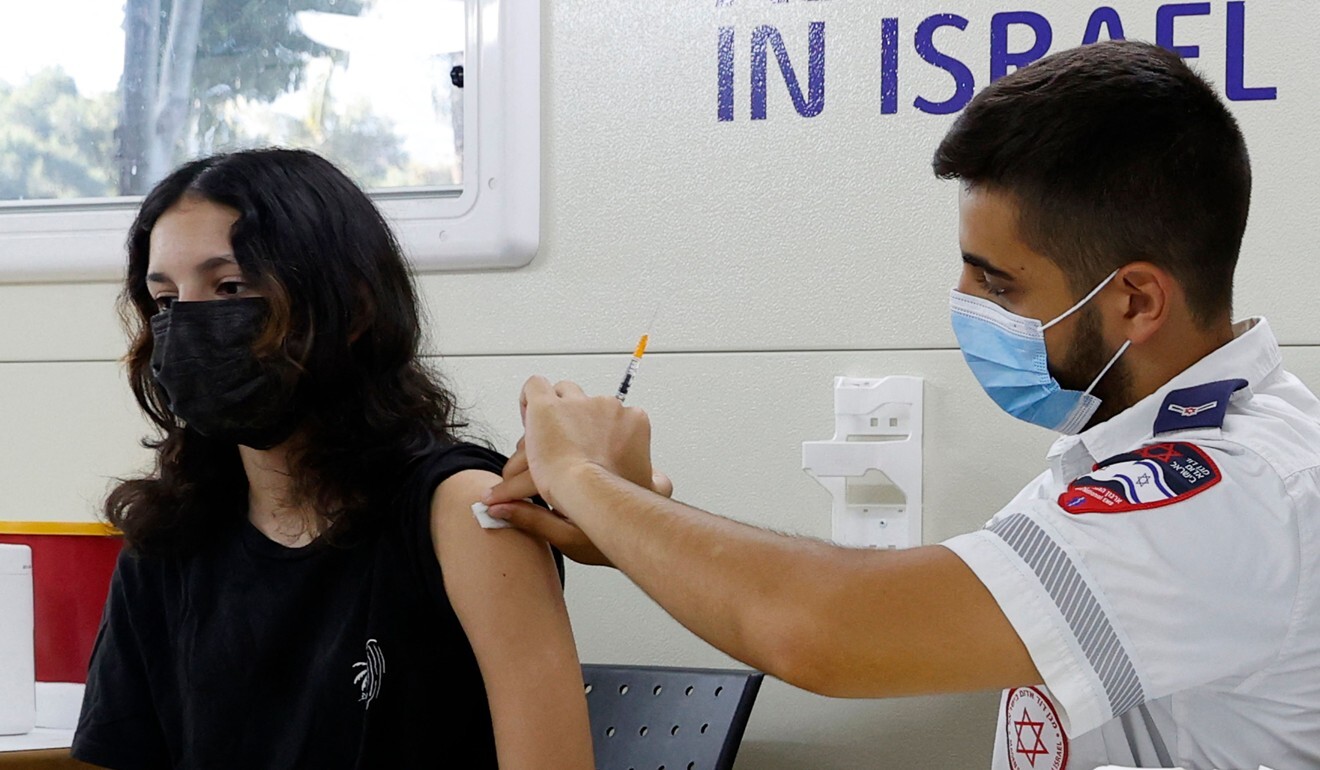
Why is the Delta coronavirus variant faster to make people sick?
- The cause may be the strain’s ability to make carriers shed the virus earlier and at much higher levels, researchers say
- Conclusions based on study of outbreak in southern China in May and June
In a paper published on Virological.org earlier this month, the researchers said the viral loads of the Delta variant grew more rapidly inside the body and caused a person to shed as much as 1,260 times more virus than the original strain last year
The variant was also quicker to reach a detectable level once a person was infected – all adding up to a much more transmissible strain, they said in a preprint paper which has not been peer reviewed.
“These data highlight that the Delta variant could be more infectious during the early stage of the infection,” they wrote.
“The greater infectiousness of the Delta variant cases in pre-symptomatic phase highlights the need for timely quarantine for suspected cases or close contacts before the clinical onset or the PCR screening.”

07:07
The global spread of the highly contagious Delta variant of Covid-19
The Delta variant, first identified in India in December, has swept across 124 countries and been described by some as the most contagious strain of the coronavirus that causes Covid-19.
It was also at the centre of an outbreak in the southern Chinese province of Guangdong that erupted in mid-May.
The researchers, including Li Yan from the Guangdong Centre for Disease Control and Prevention and Oliver Pybus from the University of Oxford, said they used the outbreak as a chance to study the transmissibility of the virus.
Between the detection of the first index case on May 21 until early June when the cluster was contained, about 30 million coronavirus tests were conducted in the high-risk population to identify those infected.
The targets were quarantined regardless of whether they showed symptoms and their close contacts immediately traced. They were centrally isolated and had daily coronavirus tests, making transmission without a known source of infection unlikely.
Whole-genome deep sequencing was performed on all identified infections and all sequences could be genetically traced back to the first index case, providing a “unique opportunity for us to characterise the viral transmission at a finer scale”, the researchers said.
China hits half-year high in daily coronavirus cases
The investigation showed that more than half of the transmissions occurred before carriers showed symptoms, and indicated that the time from exposure to the detection of the virus was four days, peaking at about 3.7 days.
In a similar study of Covid-19 outbreaks involving the original strain of coronavirus last year, the time from exposure to detection was about six days.
The viral loads in the Delta variant infections were also 1,260 times higher than in the infections caused by the original strain last year.
Guangdong authorities subsequently narrowed the window of time a person had for producing a negative test result to leave the city from 72 hours to 48 hours prior to departure. Last year, a negative test could remain valid for up to seven days.
Angela Rasmussen, a scientist with the Vaccine and Infectious Disease Organization-International Vaccine Centre in Canada, said the study suggested the mechanism behind Delta’s increased transmissibility was just because “there is a lot of it” and “soon”.
“If there’s more virus around, it’s going to be easier to spread,” Rasmussen wrote on Twitter. “If people are shedding 1,000 times more virus, the probability that a close contact will be exposed to an infectious dose is much higher. If people become contagious more quickly after exposure, they can have more opportunities to infect others.”
Now for the big Covid-19 test: how well do vaccines work in the real world?
The Delta variant now accounts for 83 per cent of the known cases in the United States, according to the US Centres for Disease Control and Prevention. British scientists estimated the variant is from 40 to 80 per cent more infectious than the Alpha variant, first identified in Britain last year.
But vaccines that have already been approved seem to still be working against the variant.
A paper published in the New England Journal of Medicine said the Pfizer-BioNTech vaccine was 88 per cent effective against symptomatic disease from Delta and the AstraZeneca vaccine was 67 per cent effective.

However Israeli government data collected over the past month showed the effectiveness of the Pfizer-BioNTech vaccine in preventing infection and mild symptoms from Delta had dropped to 40 per cent in late June and early July, compared with 95 per cent from January to early April.
But the vaccine still worked well in preventing severe illness, with 88 per cent prevention against hospitalisation and 91 per cent against severe illness, the Israeli Ministry of Health said last week.
There is no large-scale published study on how Chinese vaccines work against the Delta variant. A study from the University of Sri Jayewardenepura in Sri Lanka, published as a preprint, found that China’s Sinopharm vaccine produced “1.38 times” lower levels of neutralising antibodies, an indicator of immunity, against the Delta variant among 282 study participants.
However, neutralising activity was roughly unchanged, about “1.1 to 1.2 times” reduction of potency, in blood taken from 28 people given the full three doses of a protein subunit vaccine by Anhui Zhifei Longcom Biopharmaceutical, according to a paper that was not peer viewed.

